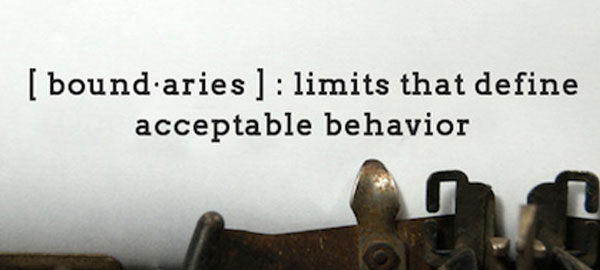
Saying no is a hardcore practice – with incredible results
After reading 4 lies that leaders tell themselves, I have been inspired to write about boundaries. Or simpler: saying no. In this case saying no to challenging employee behaviour, a problem many managers will relate to.
The referenced article is an honest description of ways leaders lie to themselves to avoid difficult employee conversations. Why is this a boundary problem?
Boundaries define acceptable behaviour. Eccentric and unpredictable employee behaviour at work is not tolerable and can negatively impact a whole department as illustrated in the article. The eccentric employee itself doesn’t have a problem. The fact that his or her behaviour is not being sanctioned, legitimises and reinforces those negative behavioural patterns without requiring any change. The leader on the other hand has a problem. It leaves him or her with a difficult employee, annoyed, resentful, reactive and potentially faced with a negative climate in the whole team.
Why do we struggle so much with setting boundaries?
Firstly, we often fear the response. Telling the truth, we may hurt feelings or worse, we get verbally attacked. We naturally won’t manoeuver ourselves into situations where we are disliked or where we feel unequipped to deal with the anger, sadness or disappointment coming back our way.
Secondly, setting boundaries also implies consequences. Boundaries without consequences are not boundaries. We may not be ready to carry or reinforce those consequences.
Thirdly and most importantly, if we are serious about setting boundaries, we have to change our own behaviours. Why? Boundaries also mark our sphere of responsibility. We cannot change another person. We can only change our own behaviour. By doing so we impact the behaviour of the other person. Generally, we don’t like to change our own behaviour, it’s hard work.
Clear boundaries put the problem back where it belongs
Back to the leader. Reinforcing boundaries, for example by means of an HR improvement plan, would have required the employee to take ownership for her problem. The problem being her irresponsible behaviour and the consequences of the improvement plan (e.g. termination) if no behavioural change is achieved.
Clearly, this measure would also have come with the risk of the employee getting angry or upset. But again, we cannot take responsibility for other people’s reaction. It’s their choice how they respond. In the long run we do them a favour owning our part. Withholding feedback also means withholding feedback that may be crucial for their advancement.
Another example: I coached an engineer in a messy and complex project. Being a high performer and diligent with her work, she would raise red flags frequently. Her supervisor subsequently pushed the arising tasks onto her plate. Causing her to be left with problems that neither belonged in her area of influence nor competence. Leaving her annoyed, out of balance and stretched with her own work tasks. In essence the boundary problem was: picking up work that was not hers (read: another person’s problems). Being overresponsible the hard part for her was being willing to let things drop to the floor, if her manager did not pick it up.
Once she did, the results were impressive. Not only was she recognised for her good performance by the client (being on top of her tasks and flagging risks) but her manager’s incapability also became visible once she stopped covering for his lacks. Her boundaries had done their job: they exposed his irresponsibility and freed her.
This change in behaviour was not without work and discomfort. So how to do it?

How to address boundary problems?
1 Own the problem
The first step is to admit that YOU have a problem. Be it that you keep waiting because your friend is constantly late for your appointments, accepting irresponsible employee behavior or feeling out of balance because you cover for your boss or co-worker.
2 Accept the resistance
You cannot change the other person, but you can change your own behaviour. Find out what it is that makes you uncomfortable. Is it fear of the other person’s reaction? Fear of burning bridges? Guilt? Having clarity on what the inside resistance is will help you penetrate it.
3 Seek support
Make sure that you have a sparring partner when you tackle your resistance. We often try the willpower approach. It hardly works. If it were that easy, we would have done it already. As a manager you may want to work together with your HR partner or sparr with another manager. It’s also common to work with a coach or mentor. Find the support network that works for you.
4 Practice
Difficult conversations will always be a little uncomfortable, but with everything you repeat you will get more savvy. If you are in an extremely difficult situation, practice setting boundaries in a safe environment first. Part of the practice is also to endure the reactions you provoke by changing your behaviour. Let people be angry or disappointed.
5 Offer help
The key in boundary setting is not to make other people’s problems your own. This doesn’t stop you from offering your help or sympathy. For example: ‘I can understand that you are angry that I won’t cover for you. How can I support in other ways?’ In the case of an HR improvement plan, it would even specifically state how the company supports the employee in the desired change.
To sum up, ‘saying no’ means taking responsibility for your own behaviour. It surely is uncomfortable and it may upset people. In the long-run it will set you free in private and work and give the other person a real opportunity to change their irresponsible behaviour for the better.
Reading: This blog post is based on my own coaching practice and the boundaries book by Dr. Henry Cloud and Dr. John Townsend.